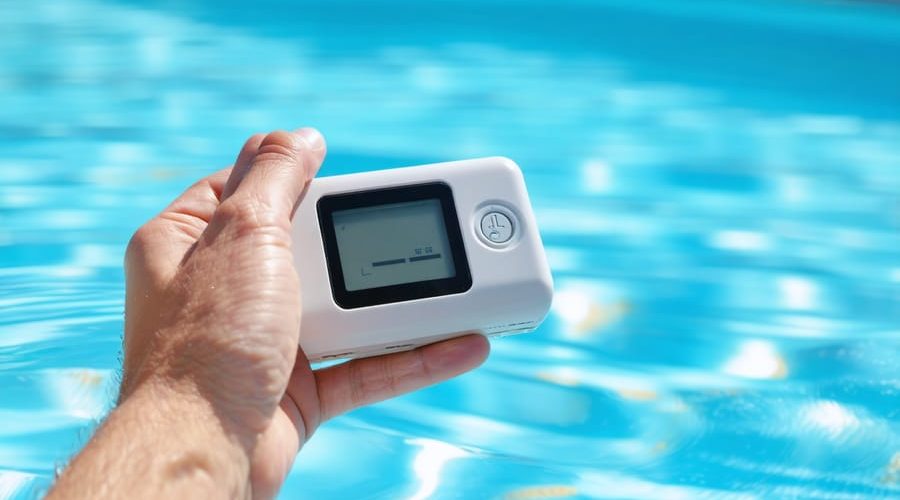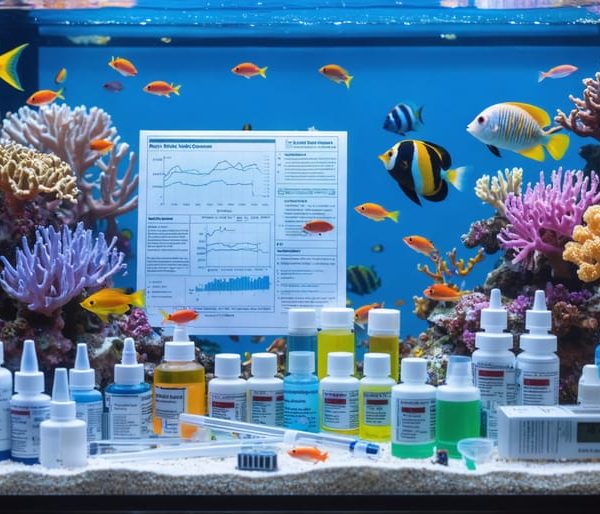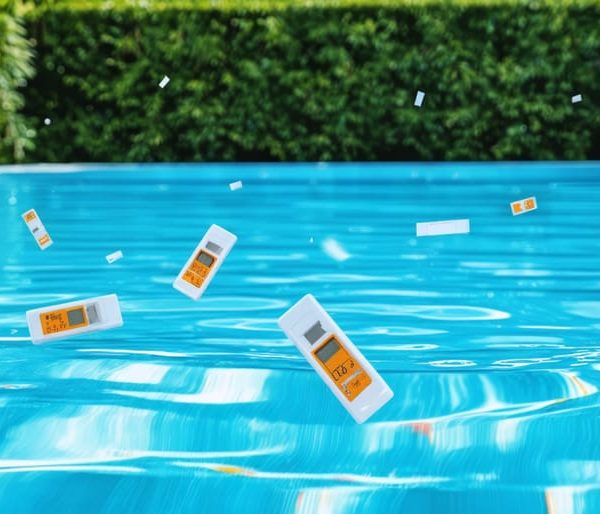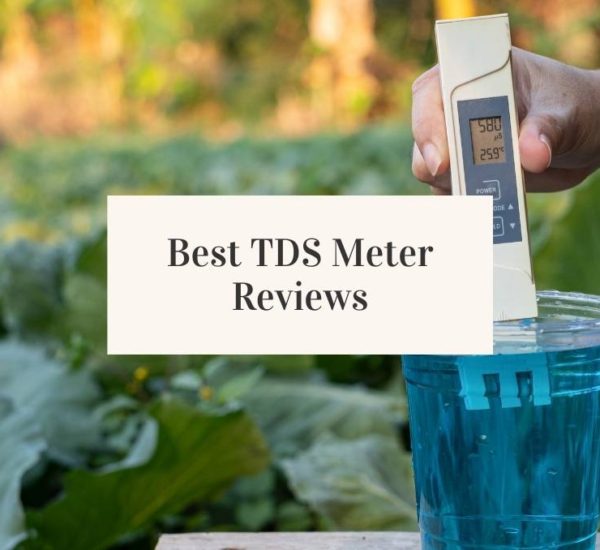Transform your pool and spa maintenance routine with the revolutionary 6-in-1 electronic water tester, the latest advancement in pool water test kits. This digital precision instrument instantly measures six crucial water parameters – chlorine, pH, alkalinity, cyanuric acid, bromine, and total dissolved solids (TDS) – eliminating the guesswork of traditional testing strips and liquid reagents. With professional-grade accuracy and lab-quality results delivered in seconds, this smart device empowers pool owners to maintain pristine water quality while saving time and reducing chemical waste. Simply dip the sensor into your pool or spa water, and the large LCD display provides clear, easy-to-read measurements that help you make immediate, informed decisions about water treatment. Whether you’re a first-time pool owner or a seasoned maintainer, this waterproof, battery-operated tester combines convenience with reliability for year-round water care excellence.
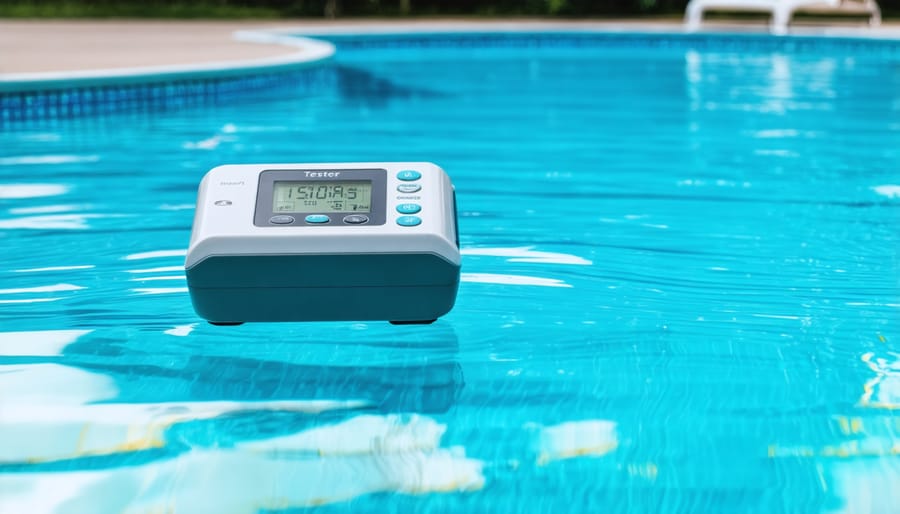
What Makes a 6-in-1 Electronic Tester Essential
The Six Critical Parameters Measured
The six critical parameters measured by this electronic tester are essential indicators of your pool or spa’s water quality and safety. Let’s explore each one and understand why they matter:
pH Level (6.2-8.4 range)
This measures how acidic or basic your water is. Maintaining proper pH (ideally 7.2-7.6) prevents eye irritation, protects pool equipment from corrosion, and ensures sanitizers work effectively. When pH is balanced, chlorine can do its job properly, and swimmers stay comfortable.
Free Chlorine (0-15 ppm)
This is your pool’s primary sanitizer, killing harmful bacteria and preventing algae growth. The ideal range is 1-3 ppm for pools and 3-5 ppm for spas. Too little chlorine leaves water vulnerable to contamination, while too much can cause skin and eye irritation.
Total Alkalinity (0-300 ppm)
Acting as a pH buffer, alkalinity helps maintain stable pH levels. The optimal range is 80-120 ppm. Without proper alkalinity, pH levels can fluctuate wildly, leading to scaling or corrosion of pool surfaces and equipment.
Total Dissolved Solids (TDS) (0-5000 ppm)
TDS measures all dissolved matter in your water, including minerals, salts, and metals. High TDS levels (over 1500 ppm) can reduce sanitizer effectiveness and cause cloudy water. Regular monitoring helps determine when water needs to be partially replaced.
Temperature (32-122°F)
Proper temperature ensures comfortable swimming and optimal sanitizer effectiveness. Ideal pool temperatures range from 78-82°F, while spas typically run 98-104°F. Temperature also affects chemical reactions and bacterial growth rates.
Cyanuric Acid (0-150 ppm)
This “sunscreen for chlorine” prevents UV rays from breaking down your sanitizer too quickly. The ideal range is 30-80 ppm. Too little means rapid chlorine loss, while too much can reduce chlorine’s effectiveness, known as “chlorine lock.”
Regular monitoring of these parameters helps maintain crystal-clear, safe water while potentially reducing chemical usage and maintenance costs.

Digital Accuracy vs. Manual Testing
When it comes to achieving perfect pool testing results, digital accuracy offers significant advantages over traditional manual testing methods. Electronic pool testers eliminate the common human errors associated with color matching and subjective interpretation of test strips. While manual testing relies on the user’s ability to distinguish between subtle color variations, digital testers provide precise numerical readings that leave no room for uncertainty.
The 6-in-1 electronic tester delivers consistent readings with an accuracy rate of ±2%, compared to the estimated 15-20% margin of error often seen with manual testing methods. This improved precision is particularly crucial when measuring sensitive parameters like pH and chlorine levels, where small variations can significantly impact water quality and swimmer comfort.
Another advantage of digital testing is its ability to store and track measurements over time, creating a reliable history of your pool’s water chemistry. This data logging feature helps identify patterns and anticipate maintenance needs, something that’s virtually impossible with manual testing methods.
However, it’s worth noting that electronic testers require proper calibration and maintenance to maintain their accuracy. When properly maintained, they provide more reliable and consistent results than manual methods, making them a worthwhile investment for pool owners committed to maintaining optimal water quality.
Using Your Electronic Tester Like a Pro
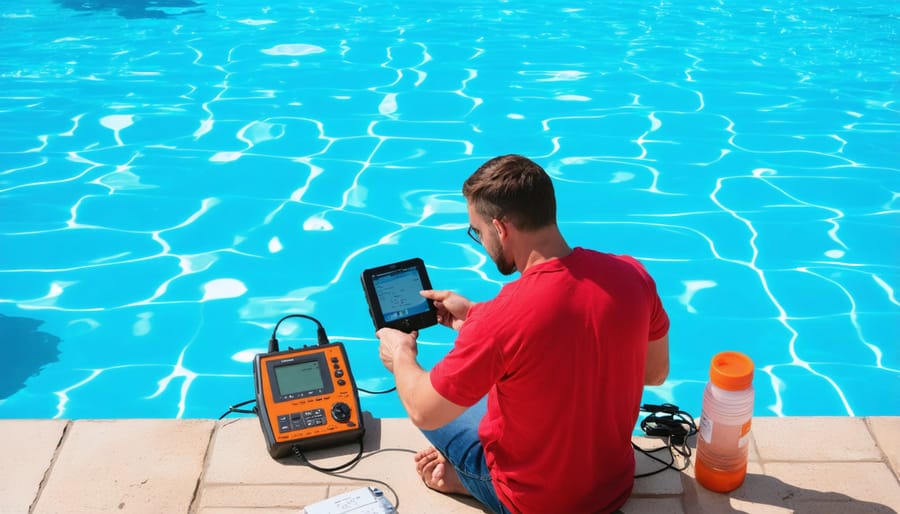
Step-by-Step Testing Process
Begin by ensuring your tester is calibrated according to the manufacturer’s guidelines for optimal water testing accuracy. Collect your water sample by submerging the device 18 inches below the pool’s surface, away from return jets and skimmers. Hold the tester steady and press the “Test” button to initiate the reading process.
Wait approximately 30 seconds while the device analyzes the water chemistry. The digital display will show readings for all six parameters in sequence: pH, chlorine, alkalinity, cyanuric acid, bromine, and TDS levels. Record these values in your pool maintenance log for future reference.
For best results, take readings at the same time each day, preferably in the morning before swimming activity begins. Clean the sensors with fresh water after each use and store the device in a cool, dry place. Replace the batteries when the low battery indicator appears to maintain consistent readings. Perform monthly calibration checks to ensure continued accuracy of your measurements.
Maintaining Your Electronic Tester
To keep your electronic tester performing accurately, regular maintenance is essential. Calibrate your device monthly using the manufacturer’s calibration solution to ensure precise readings. Before each use, rinse the probe with clean water and gently pat it dry with a lint-free cloth to prevent contamination between tests.
Store your tester in a cool, dry place away from direct sunlight and extreme temperatures. The storage case provided with your device offers optimal protection when not in use. Always replace the protective cap on the probe to prevent damage and extend sensor life.
Check and replace batteries regularly, ideally before they’re completely drained. Low battery power can affect reading accuracy. Clean the probe carefully after testing salt water to prevent corrosion, and avoid touching the sensor with your fingers, as oils from your skin can interfere with readings.
For optimal performance, replace the probe every 12-18 months, depending on usage frequency. Regular cleaning and proper storage can extend this timeframe. If readings become erratic or calibration becomes difficult, it’s time to replace the probe.
Keep the LCD screen clean and protect it from scratches using a soft microfiber cloth. These simple maintenance steps will help ensure years of reliable service from your electronic tester.
Investing in a 6-in-1 electronic pool and spa water tester represents a significant step toward maintaining a safer, cleaner, and more enjoyable swimming environment. By providing instant, accurate readings of six crucial water parameters, this modern testing solution takes the guesswork out of pool maintenance while saving both time and money in the long run. Regular testing with this device helps prevent common pool problems before they occur, protecting your investment and ensuring the health and safety of swimmers.
The convenience of digital readings, combined with the ability to track and store testing history, makes it easier than ever to maintain proper water chemistry. This not only extends the life of your pool equipment but also reduces the need for harsh chemical treatments, making it an environmentally conscious choice for responsible pool owners.
Remember, consistent water testing is the foundation of proper pool maintenance. With a 6-in-1 electronic tester in your arsenal, you’re well-equipped to keep your pool or spa in optimal condition throughout the swimming season. Make testing a regular part of your maintenance routine, and enjoy the peace of mind that comes with knowing your water is always properly balanced.
